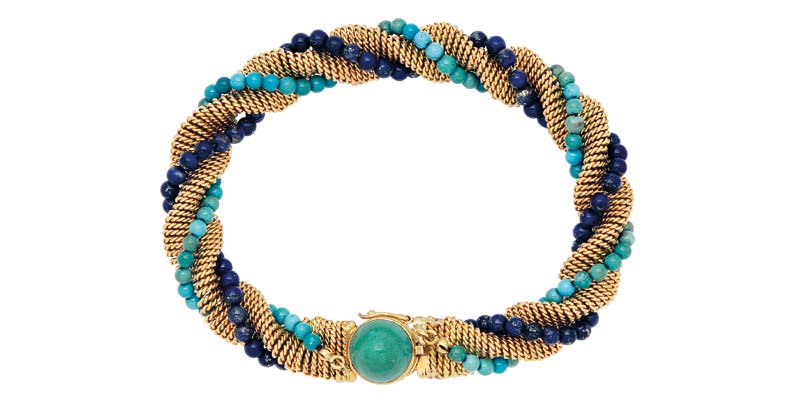By Ron Dupuis

Ask any kindergartner to draw you a picture of a necklace and what you’ll see most likely is a simple series of round beads. This is also probably what first comes to mind for some adults when they think of a necklace, a bracelet, and even earrings. Historically and anecdotally, beads have been used for everything from a form of currency, to a cure for ill health, to a solace for the soul and indeed, beautiful adornment.
The lapidary craft goes back thousands of years, with moderations of shape and design changing only slightly due to technological advances in tumbling, polishing, carving, and faceting—a mixture of artistry and geological science creatively mixed together. It may not be rocket science, but rock science isn’t far off.
Ancient Egyptians prized lapis lazuli, turquoise, emerald, carnelian, jasper, and malachite. In effect, the symbolic scarab beetle is a variation of a carved bead. By way of trade routes, the Greek and Roman civilizations added onyx, garnet, amber, blue sapphire, and topaz to the palette. Usually, beads adorned fastening gold pins called ‘fibula’ for toga-type garments, as well as earrings, necklaces, rings, bracelets, and bands for the upper arm. Pectorals—the ceremonial breastplate pendant that covered the chest area—and fabulously ornate headdresses were similarly adorned. Beads were made from anything and everything available in nature: bone, nut kernels, ivory, wood, mother-of-pearl, and coral, as well as gemstones in all manner of size, colour, and variety. All were designed to decoratively accessorize the human body.
Symbolically, and continuing to modern times in Turkey and Greece, evil eye beads of blue glass have been worn as a protective talisman to keep nasty things from happening to the wearer. The Victorians preferred to keep evil at bay with a blue and green bead reminiscent of a peacock’s feather.
Spherical motifs have long represented the sun, moon, and the planets—there’s something inherently satisfying in touching them. Rosary and worry beads are counted for prayers or stroked to alleviate the pressure and stress of daily life. The simplicity of the shape is a gift to designers’ imaginations. Combining colour with texture brings paramount importance to the design, whether it’s gracefully sedate and traditional, or wildly avant-garde.





